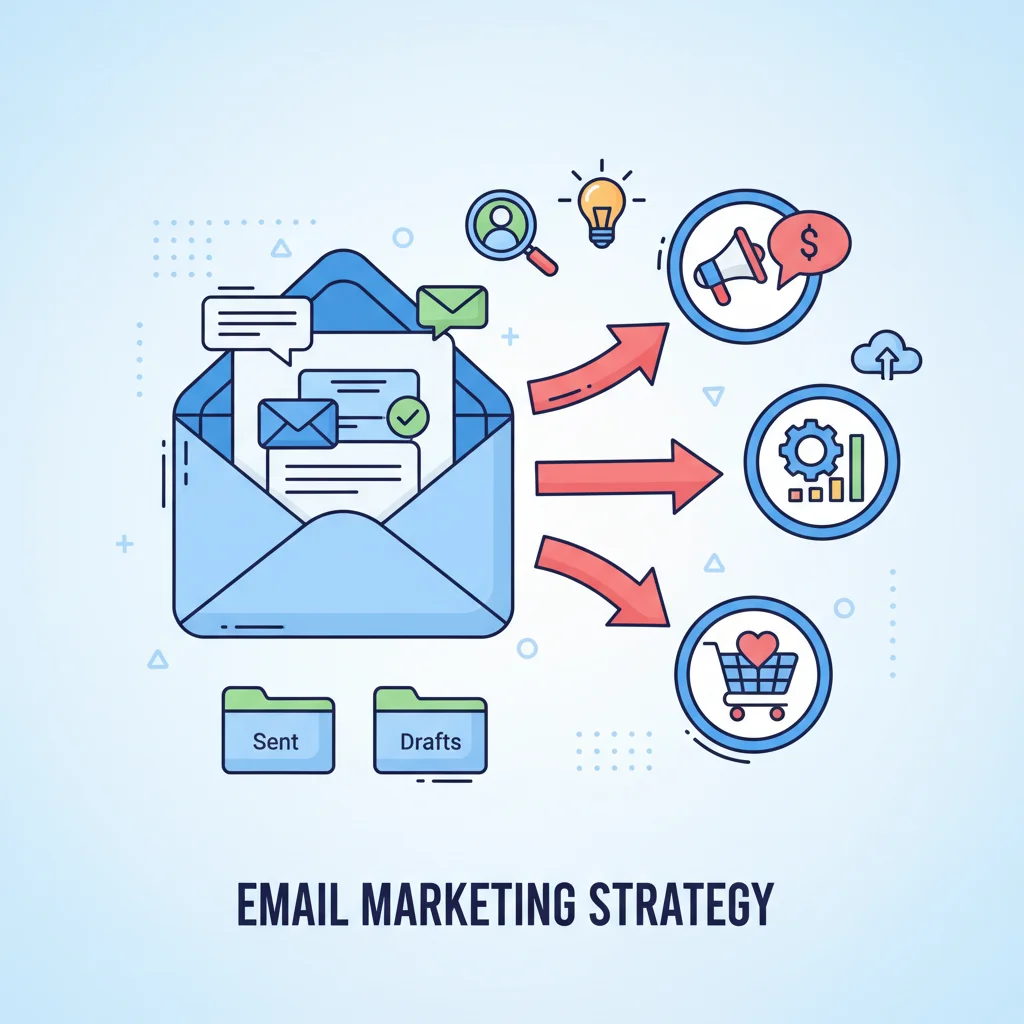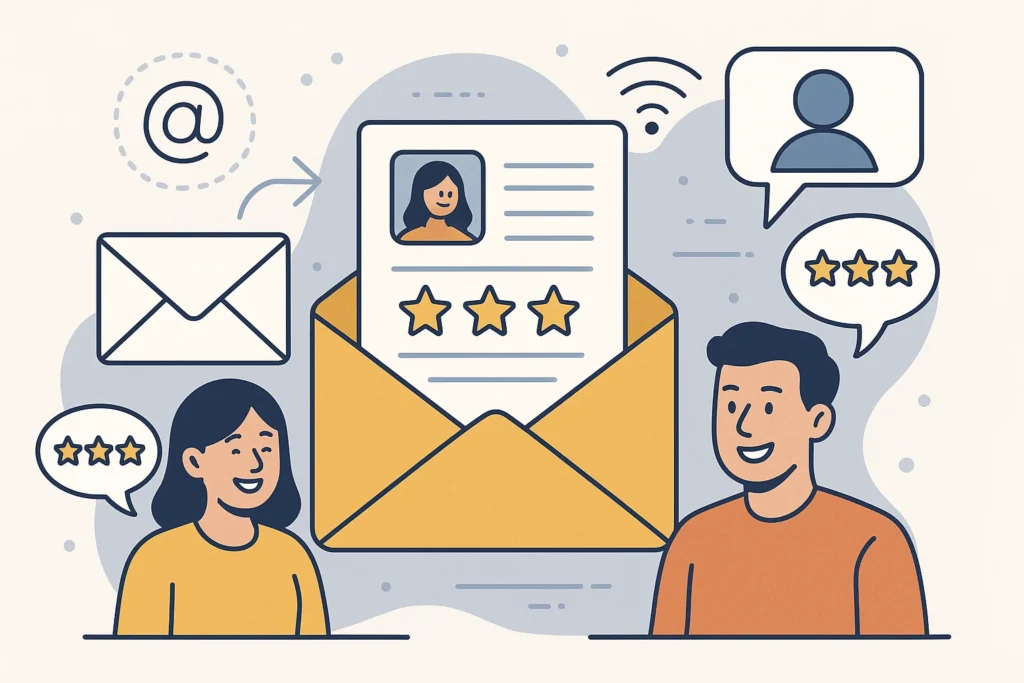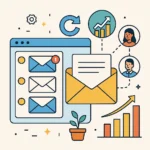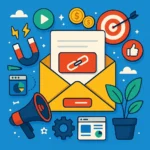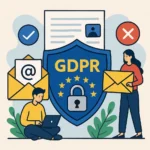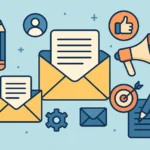Now Reading: Smart Email List Segmentation Strategies for Targeted Campaigns: From Basics to Advanced
-
01
Smart Email List Segmentation Strategies for Targeted Campaigns: From Basics to Advanced
Smart Email List Segmentation Strategies for Targeted Campaigns: From Basics to Advanced

In today’s crowded digital landscape, sending generic email blasts to your entire subscriber list is a recipe for disengagement. Smart marketers know that personalization is key to cutting through the noise, and that’s where email list segmentation strategies for targeted campaigns come into play. By dividing your subscribers into specific groups based on relevant criteria, you can deliver tailored content that resonates with each segment, driving higher open rates, click-throughs, and ultimately, conversions.
Key Takeaways
- Segment your email list by dividing subscribers into smaller groups based on demographics, behavior, preferences, geographic location, and purchase history
- Start with 2-3 key segments before expanding to more complex segmentation strategies
- Collect relevant data through sign-up forms, website tracking, surveys, and purchase history
- Use email marketing platforms with built-in segmentation features like Mailchimp, Constant Contact, or HubSpot
- Personalize content for each segment to increase relevance, engagement, and conversion rates
- Test and optimize your segmentation strategies regularly to improve results
Understanding Email List Segmentation
Email list segmentation is the strategic practice of dividing your email subscribers into smaller, more focused groups based on specific criteria. Rather than sending the same message to everyone, segmentation allows you to tailor your content to address the unique needs, interests, and behaviors of different audience segments.
Why Segmentation Matters
The days of one-size-fits-all email marketing are long gone. Today’s consumers expect personalized experiences that speak directly to their individual needs and preferences. When you implement effective email list segmentation strategies for targeted campaigns, you’re essentially telling subscribers, “I understand you,” which builds trust and strengthens relationships.
The numbers speak for themselves:
- Segmented campaigns can lead to a 760% increase in revenue
- Properly segmented emails have higher open rates, click-through rates, and lower unsubscribe rates
- Targeted emails generate 58% of all revenue for businesses
Beyond the impressive statistics, segmentation helps you deliver more relevant content, which improves the overall user experience and keeps your brand top-of-mind when customers are ready to make purchasing decisions.
Common Segmentation Criteria
Before diving into specific strategies, let’s explore the most common criteria used for email list segmentation:
Demographic segmentation divides subscribers based on personal characteristics such as:
- Age
- Gender
- Income level
- Education
- Occupation
- Marital status
Behavioral segmentation focuses on how subscribers interact with your brand:
- Purchase history
- Website activity
- Email engagement (opens, clicks)
- Shopping cart abandonment
- Product usage
Preference-based segmentation considers subscribers’ stated interests and preferences:
- Product interests
- Content preferences
- Communication frequency
- Survey/quiz results
Geographic segmentation targets subscribers based on location:
- Country
- Region/state
- City
- Zip code
- Climate zone
Lifecycle stage segmentation recognizes where subscribers are in their journey with your brand:
- New subscribers
- Active customers
- Inactive subscribers
- Loyal customers
- Former customers
By understanding these fundamental segmentation criteria, you can begin to develop a framework for your own segmentation strategy that aligns with your business goals and audience needs.
Useful Articles:
How To Segment Your Email List For Better Targeting
Now that we understand the importance of segmentation, let’s dive into the practical steps for implementing effective email list segmentation strategies for targeted campaigns.
Step 1: Set Clear Segmentation Goals
Before you start dividing your list, define what you want to achieve with segmentation:
- Increase open rates and click-through rates
- Boost conversion rates
- Reduce unsubscribe rates
- Improve customer retention
- Drive more revenue from specific customer groups
Your goals will guide your segmentation approach and help you measure success. For example, if your goal is to increase conversions among first-time buyers, you might focus on segmenting by purchase history and creating targeted campaigns for new customers.
Step 2: Choose The Right Segmentation Criteria
Select segmentation criteria that align with your goals and make sense for your business. While there are countless ways to segment your list, start with 2-3 key segments before expanding to more complex strategies.
For an e-commerce business, effective segmentation criteria might include:
- Purchase history (product categories, frequency, recency, monetary value)
- Website behavior (pages visited, products viewed)
- Email engagement (active vs. inactive subscribers)
For a B2B company, relevant criteria could include:
- Industry
- Company size
- Job title
- Sales funnel position
- Content engagement
Remember that the best segmentation strategy is one that reflects your unique audience and business objectives. Don’t feel pressured to implement every possible segment at once—start with what will make the biggest impact.
Step 3: Collect Relevant Data
Effective segmentation relies on quality data. Here’s how to gather the information you need:
Sign-up forms: Collect essential information during the subscription process, but keep it simple—asking for too much information can reduce sign-up rates. Consider using progressive profiling to gather additional data over time.
Website tracking: Implement tracking tools to monitor subscriber behavior on your website, including pages visited, products viewed, and time spent on site.
Email engagement data: Track opens, clicks, and other engagement metrics to understand how subscribers interact with your emails.
Purchase history: Analyze past purchases to identify patterns and preferences.
Surveys and quizzes: Use these tools to gather psychographic information and preferences directly from subscribers.
Social media integration: Connect social profiles to gain insights into subscribers’ interests and behaviors across platforms.
When collecting data, always be transparent about how you’ll use it and ensure compliance with privacy regulations like GDPR and CCPA.
Step 4: Choose The Right Email Marketing Platform
Selecting a platform with robust segmentation capabilities is crucial for implementing your strategies effectively. Look for these features:
- Built-in segmentation tools
- Automation capabilities
- Dynamic content options
- A/B testing functionality
- Analytics and reporting
Popular platforms with strong segmentation features include:
- Mailchimp
- Constant Contact
- HubSpot
- Brevo (formerly Sendinblue)
- Klaviyo
- GetResponse
Each platform offers different segmentation capabilities, so choose one that aligns with your specific needs and budget.
Step 5: Create Your Segments
With your data collected and platform selected, it’s time to create your segments. Here’s a step-by-step approach:
- Start small: Begin with 2-3 segments based on your most important criteria
- Define clear parameters: Establish specific conditions for each segment
- Create segment names: Use descriptive names that clearly identify each group
- Set up automated rules: Configure your platform to automatically add subscribers to appropriate segments based on their behavior
- Implement dynamic segmentation: Allow subscribers to move between segments as their behavior or preferences change
Remember that segmentation is not a one-time task but an ongoing process that evolves as you gather more data and insights about your subscribers.
Powerful Email List Segmentation Strategies For Targeted Campaigns
Now, let’s explore specific segmentation strategies you can implement to enhance your email marketing effectiveness.
Demographic Segmentation Strategies
Demographic segmentation is often the starting point for many businesses because this data is relatively easy to collect and provides a fundamental understanding of who your subscribers are.
Age-based segmentation: Different age groups have distinct preferences, communication styles, and purchasing behaviors. For example, a clothing retailer might send trend-focused content to younger demographics and comfort-oriented messaging to older subscribers.
Gender-specific campaigns: When relevant to your products or services, segmenting by gender allows you to tailor imagery, language, and offers appropriately.
Income-level targeting: Luxury brands might segment by income to ensure high-end products are promoted to subscribers who can afford them, while also creating value-focused campaigns for other segments.
Occupation-based content: B2B companies can segment by job title or industry to deliver content that addresses specific professional challenges and opportunities.
Remember that demographic segmentation works best when combined with other criteria for more nuanced targeting.
Behavioral Segmentation Strategies
Behavioral segmentation is particularly powerful because it focuses on actual actions rather than assumptions based on demographic characteristics.
Engagement-level segmentation: Divide subscribers based on how they interact with your emails:
- Active subscribers: Those who regularly open and click
- Semi-active subscribers: Those who open but rarely click
- Inactive subscribers: Those who haven’t engaged in a specific timeframe
This allows you to create re-engagement campaigns for inactive subscribers while nurturing active ones with more advanced content.
Purchase history segmentation: Segment based on:
- Products purchased: Recommend complementary items
- Purchase frequency: Identify and reward loyal customers
- Average order value: Offer upsells to high-value customers
- Time since last purchase: Send reminders to customers who haven’t purchased recently
RFM segmentation: This advanced behavioral strategy segments customers based on three key metrics:
- Recency: How recently a customer made a purchase
- Frequency: How often they purchase
- Monetary value: How much they spend
By combining these factors, you can identify your most valuable customers, those at risk of churning, and everyone in between.
Website behavior segmentation: Track how subscribers interact with your website:
- Pages visited
- Products viewed but not purchased
- Downloads or resource access
- Time spent on site
This information helps you understand subscriber interests and create highly targeted follow-up emails.
Preference-Based Segmentation Strategies
Preference-based segmentation puts subscribers in control by honoring their stated interests and communication preferences.
Content preference segmentation: Allow subscribers to select topics they’re interested in and deliver content accordingly. For example, a fitness brand might segment subscribers interested in strength training, cardio, nutrition, or mindfulness.
Email frequency segmentation: Some subscribers want daily updates, while others prefer weekly or monthly communications. Respecting these preferences can significantly reduce unsubscribe rates.
Communication channel preference: Segment based on whether subscribers prefer email, SMS, social media, or other channels for different types of communications.
Survey-based segmentation: Use surveys to gather detailed information about subscriber preferences, pain points, and goals, then segment accordingly.
Geographic Segmentation Strategies
Location-based segmentation enables you to deliver regionally relevant content and offers.
Local event promotion: Notify subscribers about events, workshops, or store openings in their area.
Weather-based campaigns: Promote seasonal products based on local weather conditions (e.g., rain gear during rainy seasons, sun protection during summer).
Regional product availability: Only promote products or services available in the subscriber’s region.
Time zone optimization: Send emails at optimal times based on the subscriber’s local time zone.
Cultural relevance: Tailor content to reflect regional holidays, customs, or preferences.
Lifecycle Stage Segmentation Strategies
Recognizing where subscribers are in their journey with your brand allows you to deliver stage-appropriate content.
New subscriber onboarding: Welcome new subscribers with introductory content, basic information about your brand, and initial offers.
First-time buyer nurturing: After the first purchase, focus on building the relationship and encouraging a second purchase.
Loyal customer appreciation: Recognize and reward your most loyal customers with exclusive offers, early access to new products, or VIP content.
Re-engagement campaigns: Target inactive subscribers with special offers or content designed to rekindle their interest.
Win-back campaigns: Create specific strategies for former customers who haven’t purchased in a significant period.
Useful Articles:
Advanced Email List Segmentation Strategies
Once you’ve mastered the basics, consider these advanced segmentation strategies to further refine your targeting.
Predictive Segmentation
Predictive segmentation uses AI and machine learning to anticipate subscriber behavior and preferences. This approach analyzes patterns in existing data to predict:
- Which products a subscriber is likely to purchase next
- When a subscriber might be ready to make a purchase
- Which subscribers are at risk of churning
- Lifetime value potential of new subscribers
By leveraging predictive analytics, you can proactively address subscriber needs before they even express them.
Psychographic Segmentation
While demographic data tells you who your subscribers are, psychographic segmentation reveals why they make certain decisions. This approach segments based on:
- Values and beliefs
- Lifestyle choices
- Personality traits
- Attitudes and opinions
- Interests and hobbies
For example, a sustainable clothing brand might segment environmentally conscious subscribers separately from those primarily interested in fashion trends, even if both groups share similar demographics.
Customer Journey Mapping
This strategy involves creating detailed maps of the customer journey and segmenting subscribers based on their position within that journey:
- Awareness stage: Subscribers who are just learning about your brand or products
- Consideration stage: Those actively researching options
- Decision stage: Subscribers on the verge of making a purchase
- Retention stage: Existing customers who might make repeat purchases
- Advocacy stage: Loyal customers who could become brand advocates
By aligning your email content with each stage, you can guide subscribers through the journey more effectively.
Cross-Channel Behavior Segmentation
This approach considers subscriber behavior across multiple channels:
- Email engagement
- Website activity
- Social media interaction
- Mobile app usage
- In-store purchases
By creating a unified view of subscriber behavior across all touchpoints, you can develop more comprehensive and effective segmentation strategies.
Implementing Your Email List Segmentation Strategy
With a clear understanding of various segmentation strategies, let’s discuss how to implement them effectively.
Creating Targeted Content For Each Segment
Segmentation is only valuable if you deliver relevant content to each segment. Here’s how to create targeted content that resonates:
Personalize subject lines: Include the subscriber’s name or reference their specific segment (e.g., “New arrivals in [city]” or “Handpicked for [hobby] enthusiasts”).
Customize email design: Adjust imagery, colors, and layout to appeal to different segments.
Tailor your messaging: Speak to the specific pain points, interests, or goals of each segment.
Adjust your offers: Create segment-specific promotions or incentives.
Vary content depth: Some segments may prefer detailed information, while others respond better to concise messaging.
Remember that the goal is not just to acknowledge differences between segments but to deliver genuinely valuable content that addresses each segment’s unique needs.
Automating Your Segmentation Process
Manual segmentation is time-consuming and difficult to scale. Automation is key to implementing sophisticated segmentation strategies efficiently:
Set up triggered emails: Configure your email platform to automatically send specific emails based on subscriber actions or milestones.
Create dynamic content blocks: Use content that automatically changes based on subscriber attributes or behavior.
Implement automated workflows: Design email sequences that adapt based on how subscribers engage with previous messages.
Use API integrations: Connect your email platform with your CRM, e-commerce system, and other tools to ensure data flows seamlessly between systems.
Automation not only saves time but also ensures subscribers receive the right content at the right moment, increasing the effectiveness of your campaigns.
Testing And Optimizing Your Segments
Segmentation is not a “set it and forget it” strategy. Continuous testing and optimization are essential:
A/B test segment criteria: Experiment with different ways of defining segments to find the most effective approach.
Test content variations: Try different messaging, offers, and designs for each segment to determine what resonates best.
Monitor segment performance: Track key metrics for each segment to identify which are performing well and which need refinement.
Adjust segment boundaries: As you gather more data, you may need to redefine segment parameters for better targeting.
Combine or split segments: Some segments may perform better when combined, while others might benefit from further division.
Regular analysis and optimization ensure your segmentation strategy evolves alongside your subscribers’ changing needs and behaviors.
Useful Articles:
Best Practices For Email List Segmentation
To maximize the effectiveness of your email list segmentation strategies for targeted campaigns, follow these best practices:
Start Small And Scale
Begin with 2-3 key segments that will make the biggest impact, then expand your segmentation strategy as you gain confidence and see positive results. This approach prevents overwhelm and allows you to test and refine your strategy before investing in more complex segmentation.
Focus On Relevant Data
Not all data is equally valuable for segmentation. Identify the specific data points that align with your business goals and audience needs, and focus on collecting and analyzing that information. This targeted approach ensures you’re not wasting resources on data that won’t improve your segmentation effectiveness.
Maintain Clean Data
Regularly clean your email list to remove invalid addresses, update changed information, and correct errors. Clean data is essential for accurate segmentation and helps maintain good deliverability rates for your campaigns.
Respect Subscriber Preferences
Always provide clear options for subscribers to update their preferences, and honor those choices in your segmentation strategy. This respect builds trust and reduces unsubscribe rates.
Test Continuously
A/B test different segmentation approaches, content variations, and messaging strategies to identify what works best for each segment. Continuous testing leads to ongoing improvements in campaign performance.
Monitor Segment Performance
Regularly analyze how different segments are performing against your key metrics. This analysis helps you identify which segments are most valuable and which segmentation strategies are most effective.
Balance Personalization And Privacy
While personalization improves engagement, it’s essential to respect privacy boundaries. Be transparent about how you use subscriber data and ensure your segmentation practices comply with relevant regulations.
Integrate Across Channels
Align your email segmentation strategy with your broader marketing approach to create consistent, personalized experiences across all customer touchpoints.
By dividing your subscribers into meaningful segments based on demographics, behavior, preferences, and other criteria, you can deliver more relevant, personalized content that drives engagement, conversions, and loyalty. Start with a few key segments, gather quality data, choose the right platform, and continuously test and optimize your approach.


